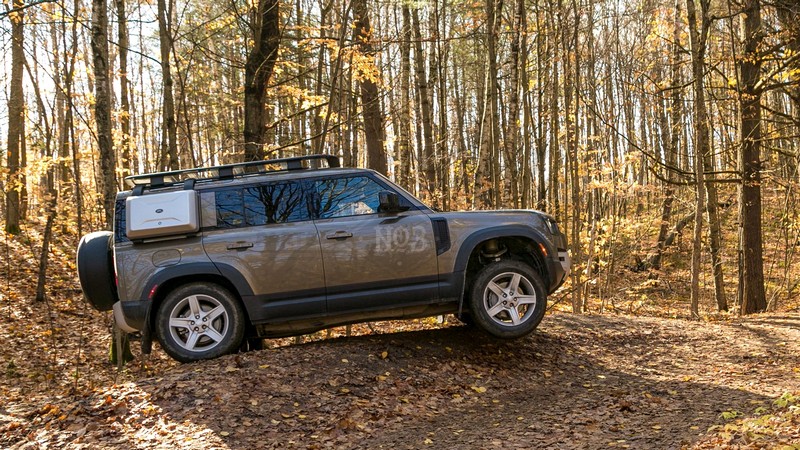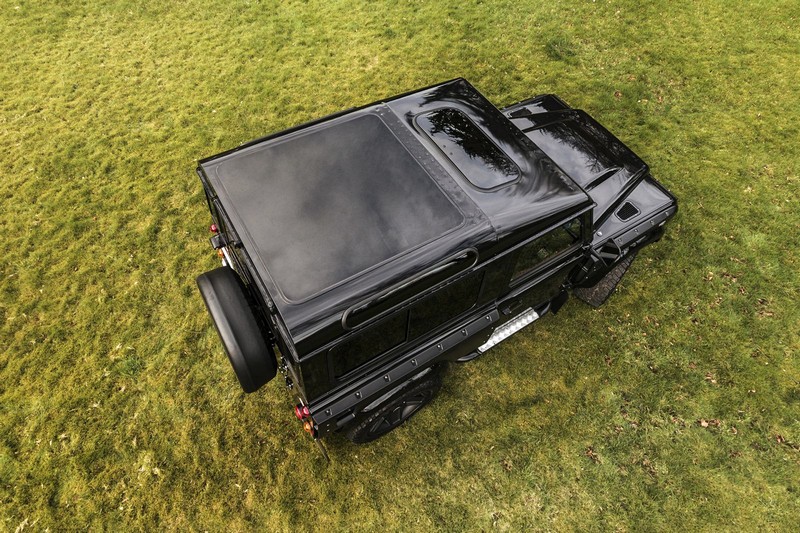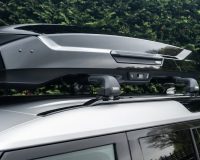These days, every manufacturer is jumping on the rugged rig bandwagon. Those cute little urban crossovers you see by the dozen in the mall parking lot are probably offered with some sort of “Trail Edition,” “Adventure Pack,” or “Crunchy Granola” flavour. It’s all a bit ridiculous since few will ever venture any further from the pavement than the manicured grass at the local county fair.
Land Rover is different, though. Even its highest-performing road machine, the Velar SVAutobiography I drove last autumn will not only hit 100 km/h in four seconds, but it can also ford a river more than two feet deep. The folks at Land Rover aren’t just putting on hiking boots to go glamping; this is a company with more than seventy years of serious off-roading credibility at stake.
So, when Land Rover unleashes a new Defender – its most serious and rugged machine – off-road enthusiasts around the world drop what they’re doing and pay attention.
A Contemporary Homage to Classic Land Rovers
The new 2020 Land Rover Defender’s styling has received some flak from the online armchair experts, but in many respects it does a good job capturing some key Landie elements. Its profile, for one, remains boxy and upright, which gives the interior a bright, airy feel, and offers a commanding driving position.
The roof edges have a pair of glass skylights as classic Land Rovers have had for generations, and the rear lights are scattered around in a way that’s reminiscent of the olden days, too. There are even plastic panels on the outer edges of the hood made to look like the flat fender tops of old Rovers.
The interior is functional and clever, especially for the number of nooks, crannies, and cubbies throughout. Thoughtfully, the designers have also integrated grab handles into the design along the dashboard; and those who’ve spent time in a vehicle crawling off-camber over rocks will appreciate the extra places to hold on.
The seats are decently supportive and comfortable, and they’re cleverly trimmed in leather, with the outer edges and high-wear zones covered in a durable-feeling tweed-like textile. The rubber flooring throughout can be hosed out, of course.
The back seat is roomier than most midsize competitors, and the cargo hold is capacious thanks to the big, boxy shape of the Defender itself.
On-road Manners
The first Land Rovers (which eventually evolved into the Defender) were constructed from surplus materials from World War II, and offered as much refinement as one would expect from the multi-seat farm implement it was. As time went by, the Defender remained unapologetically rough and rugged, and a fervent cult following emerged.
This new Defender is not only the first to be brought to North America in more than two decades, it’s also the first major redo of the basic Defender since 1983. There are going to be a lot of drivers surprised by the level of refinement and sophistication of this new machine.
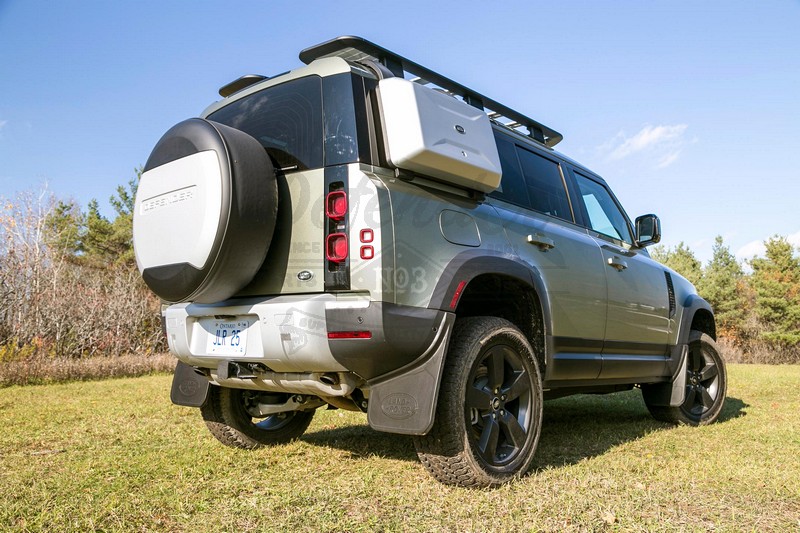
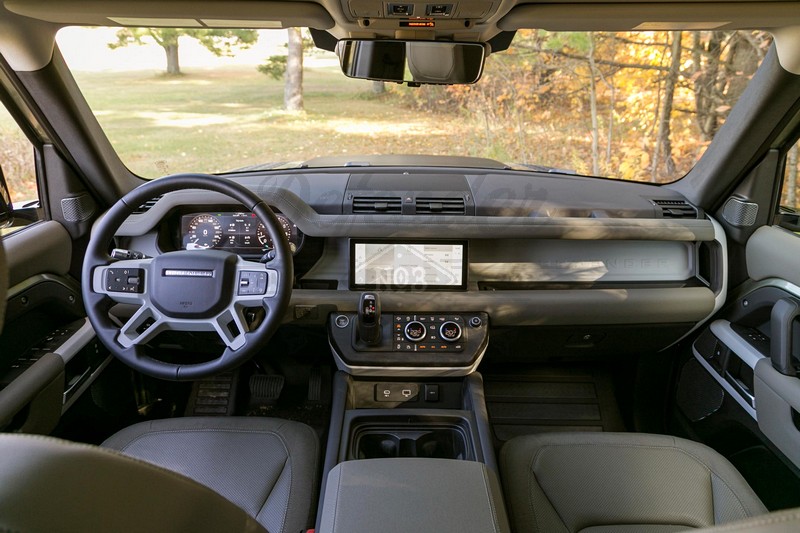
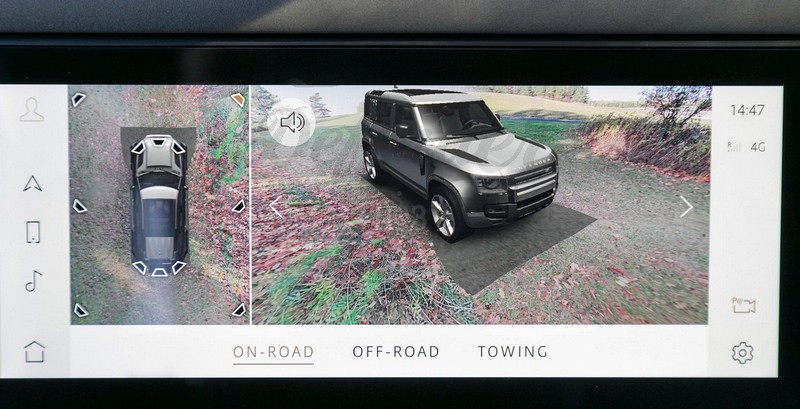
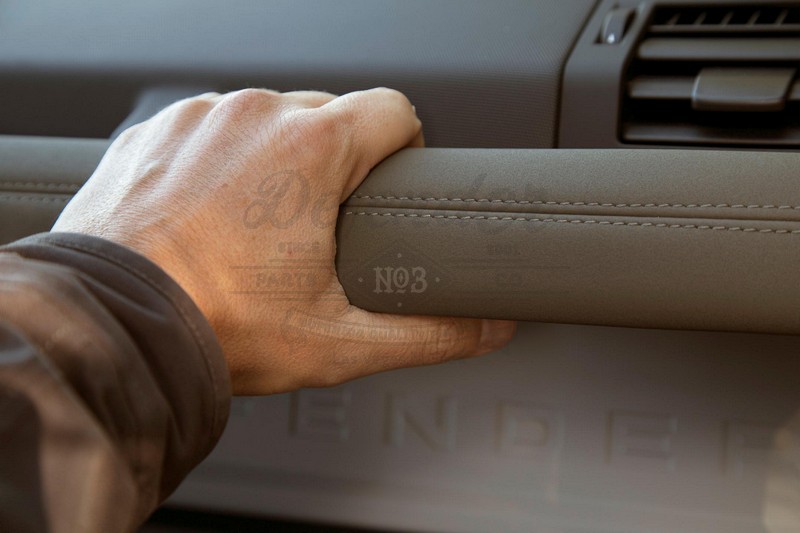
The drivetrain of my P400 test unit was a 3.0L inline-six-cylinder gasoline engine, augmented by a turbocharger and an electrically powered supercharger, plus a mild-hybrid system. With 395 hp and 406 lb-ft of torque, the Defender is legitimately quick to accelerate – a trait previous Defenders were never known for. The entry-level engine in the P300 models is a 2.0L turbocharged four-cylinder that’s down roughly 100 points for both horsepower and torque.
An eight-speed automatic is the only available transmission, but it does an excellent job keeping the P400 in its admittedly meaty powerband. Shifts are smooth but swift.
And while the steering lacks any appreciable road feel, the handling is still competent enough that I found myself actually pushing the Rover hard into corners on the road, resulting in very little drama. Short of the Mercedes-AMG G 63, I’ve never piloted such an adept off-roader with such enthusiasm or speed on-road.
Useful Technology
Land Rover has struggled with its infotainment systems in recent years, first because the units were so archaic, and recently, with systems that tended to glitch frequently. The latest rendition of the system found in the Defender operated flawlessly during my drive. Apple CarPlay connected easily and input responses were quick; menu navigation, meanwhile, was smooth and logical. The buttons on the steering wheel, however, are tricky to find and operate without taking one’s eyes off the road, which defeats the purpose of their convenience in the first place.
The infotainment system also serves as the connection point to the myriad off-road settings a driver can activate. One of the most interesting is the series of camera angles that can show all sides of Defender’s surroundings, and even create a 3-D depiction of the vehicle in its space. This is a wonderful feature that could prevent a lot of muddy feet when a trail can be scouted without even leaving the cockpit.
Land Rover calls its configurable drive modes Terrain Response; they adjust everything from throttle response and wheel slip to which differentials are locked, depending on pre-sets for various conditions like sand, mud, rocks, or customizable to the driver’s preference.
For our brief off-road experiences, the setup involved simply selecting the low-range button, plus lifting the air suspension to tippy-toe mode. The computers sorted out everything else on the fly.
Off-road Prowess
All of this sounds impressive in theory, but on the trail it all comes together remarkably well. While there wasn’t any intense rock-crawling, mud-slinging, or high-speed desert runs during our drive, there were some key functions explored that proved Land Rover still has its off-road chops.
Over one particularly gnarly set of moguls, even at a moderate, consistent pace, the Defender would systematically have one wheel in the air, before dropping slightly to the opposing corner, all the while seamlessly apportioning power to the wheels that had traction.
The air suspension keeps the Defender’s cabin relatively level and exceptionally calm while tackling all manner of terrain imperfections below. Likewise, during a climb up a steep, sandy hill, the all-wheel-drive system kept the Defender climbing smoothly all the way to the top. During a climb back down a slick mud hill that required both a change of direction and two 250-mm drops, the Land Rover never lost composure.
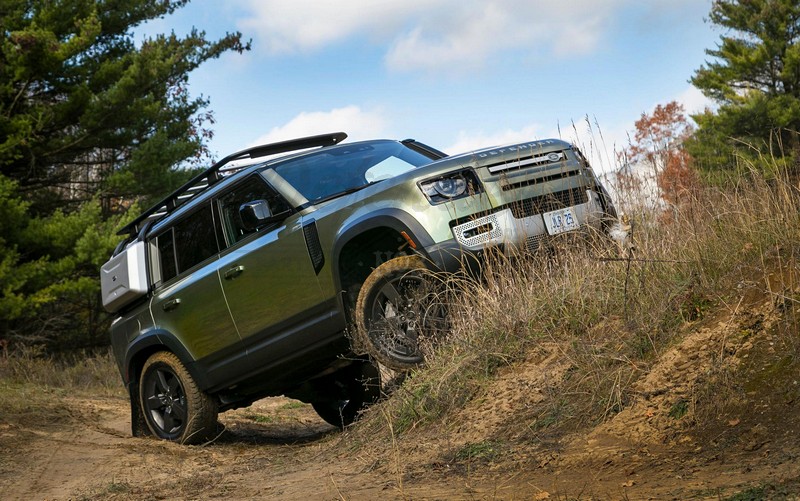
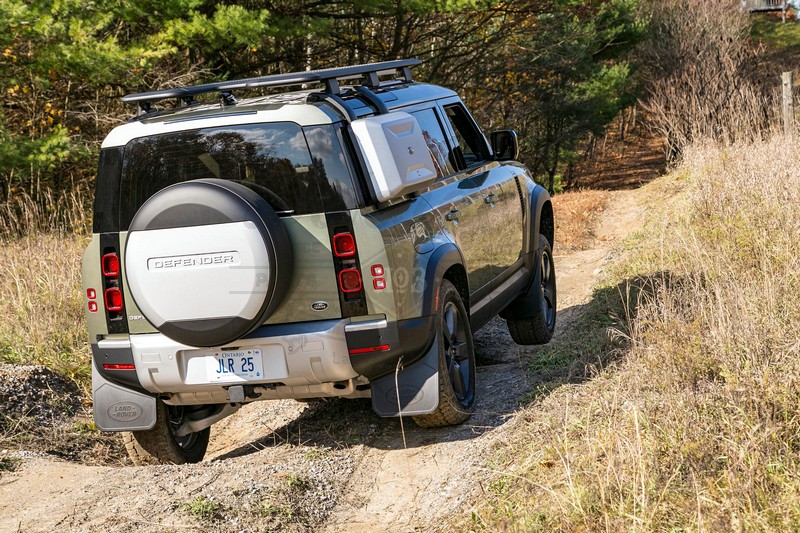
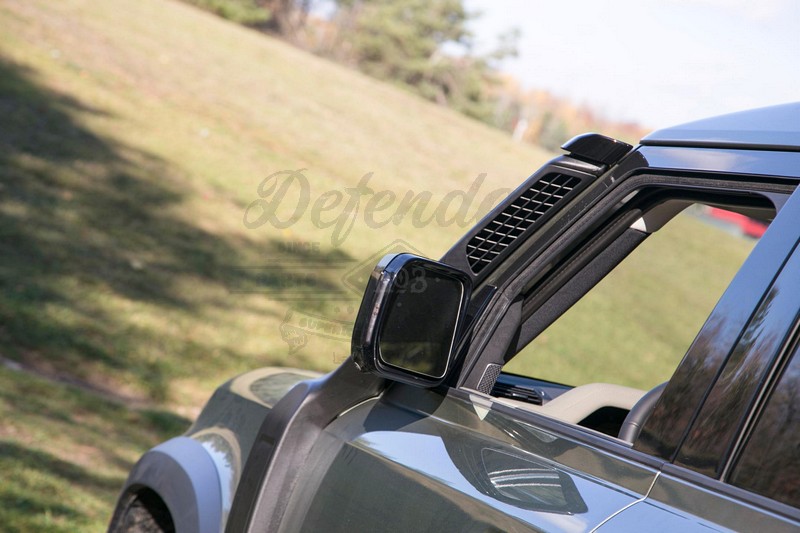
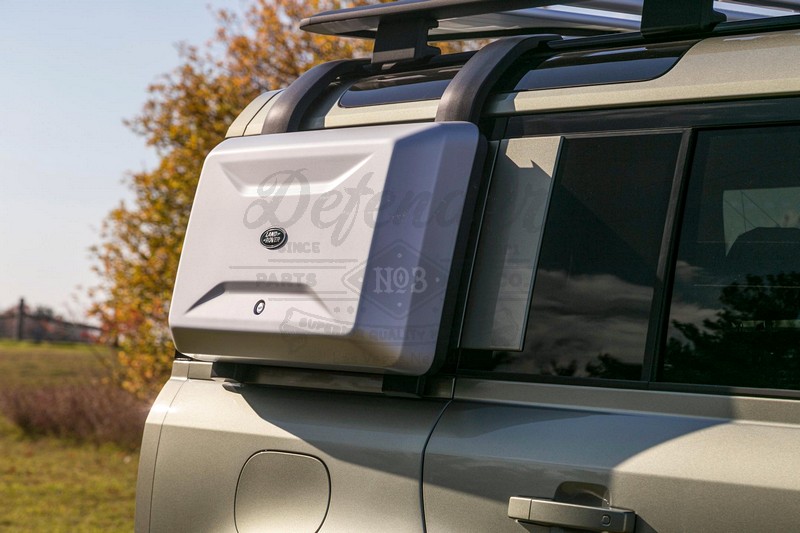
There were occasions when the Defender felt particularly long on the trail. Trying to turn around within the woods, the Defender’s size can be tedious to work with, and its turning circle is large compared to the competitors. [There is a two-door version, dubbed the Defender 90, for those so inclined.–Ed.]
Using the current-generation Jeep Wrangler Unlimited as the off-road benchmark – a vehicle I have used several times for some serious rock-crawling and trail drives – the four-door Defender 110 I drove stacks up very well.
Despite the Defender’s notably greater overall length, its air suspension can lift the rig high enough to best the Wrangler Unlimited in both breakover and departure angles. Its front approach angle isn’t quite as aggressive as the Jeep’s, but it’s close; with a very slight off-centre approach to a near-vertical rut wall that stood about 250 mm high, the Defender had no problem crawling up without stuffing its nose nor bouncing its butt off the trail.
However, as good as the air suspension is, it still cannot provide the same level of articulation as a Wrangler Rubicon, with its electronically actuated sway bar disconnected. As a result, the Defender will have more time with a wheel uselessly in the air instead of gripping terra firma. The Defender could also benefit from a more aggressive all-terrain tire option.
The Defender’s fording depth is greater than the Wrangler’s as well. But don’t be fooled by the elevated air intake riding up the A-pillar: it doesn’t increase wading depth, but rather reduces the risk of dust being ingested into the air intake, presumably during desert running. It also makes a wild sucking noise under acceleration that threatens to give the driver the world’s biggest hickey.
Final Thoughts
The new Defender’s on-road performance is excellent. It drives very much like the premium sport utility vehicle it is, and not as agriculturally as the old Defenders, or even Jeep’s most-polished Wranglers. There’s no creaking or groaning from the body or underpinnings, even as the Defender crawls over terrain that would cause a Wrangler to broadcast its flexing against seals and joints.
The insulation and stiff body structure do a remarkable job hushing outside noises, and the finishes, while rugged, still speak to a very premium design.
The new Defender 110 is surprising for its comfort, technology, and refinement, creating an incredibly capable off-road vehicle that effortlessly consumes whatever terrain it encounters, even if that’s smooth, twisty pavement.
Never has genuine off-roading been as simple as it is with the Defender. It’s almost too easy and drama-free, lacking the driver involvement required in a Wrangler, or an older Defender.
Land Rover has created a feat of engineering with the new Defender that is sure to exceed the expectations of most buyers. With significant help from its bounty of technology, the new Defender appears to live up to its heritage promise as being the most capable Land Rover.
The 2020 Land Rover Defender is available now at dealerships.
Article Credit: Jeff Wilson
Full Article: https://www.autotrader.ca/expert/20201030/2020-land-rover-defender-110-first-drive-review/

